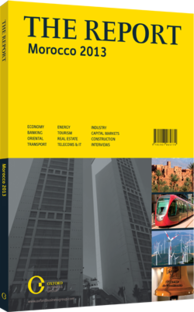Caring for those in need: A new programme is making health care available to lower-income communities
In a bid to reduce the gap between health care access in urban districts and rural areas, as well as increase support for low-income citizens, the government has shifted rolling out its new health insurance programme into full gear. The new medical assistance regime (Regime d'Assistance Medicale, RAMED) was officially inaugurated by King Mohamed VI on March 6, 2012, and full implementation began in January 2013.
More than 4m people of the targeted 8.5m eligible beneficiaries have already gained access to public health care facilities. The goal is to increase health support for low-income citizens. The Ministry of Health has classified the new medical assistance scheme as “a right of the citizens and an obligation of the state”.
OFF TO A GOOD START: Following a trial programme that began at the end of 2008 in the region of Tadla-Azilal, and expanded into the rest of the country in 2011, the new state health care insurance programme is already giving access to a part of the population that is not covered by the state-financed, employer-based health insurance firm Assurance Maladie Obligatoire (AMO) and cannot afford private health insurance.
Although the establishment of the system has years to go, the expansion of health care access to the less advantaged has gained new momentum after the 2011 constitutional reforms, which enshrined access to proper medical attention as a basic right of all Moroccans. The government expects that around 50% of eligible citizens will be signed up to the programme by the end of 2013. “In every public health insurance system in the world it generally takes about three years for a full roll-out,” Hassan Semlali, the division chief in charge of RAMED at the Ministry of Health, told OBG. “So we are quite advanced in the process.”
PAYING FOR IT: Running RAMED is expected to cost around Dh2.5bn (€222.3m) annually. Financing will be divided between government funds, covering 75% of the cost, regional authorities, which will fund 6% of the programme (giving Dh40, or €3.56, per each RAMED card holder located in their constituency), and the beneficiaries themselves, whose annual contributions are set to cover 19% of the programme.
RAMED establishes a threshold of individual private contribution, depending on the beneficiary’s income.
Adults in the relatively poor category, which will include 4.5m people once the programme is fully operational, are required to pay Dh120 (€10.67) a year, up to a maximum of Dh600 (€53.34) per household. Those in the poor category, around 4m beneficiaries, will not be required to pay any contribution. The programme will also provide health care to an extra 160,000 people currently under state care, such as children in social protection centres and inmates of the country’s prisons.
SUPPORT FROM ABROAD: The African Development Bank has supported the implementation of RAMED as part of a comprehensive €70m shoring up package to expand access to health facilities. The EU has also chipped in with a €40m grant for the overall sector. However, the long-term sustainability of the programme, which will depend heavily on the state budget, will be determined by future economic growth and the degree to which Morocco can reduce poverty levels. “The hope is that development will help us to ease the growth in the number of beneficiaries in the future and the percentage of population that depend on RAMED,” said Semlali. In 2013 about 5.7% of the state’s budget will be spent on health care, according to the Ministry of Health. Furthermore, an extra Dh1bn (€88.9m) from the Social Cohesion Fund will be unblocked to help strengthen the programme through acquisition of pharmaceuticals and medical equipment maintenance. The Social Cohesion Fund was established in 2012 to help alleviate income inequity in the country.
Another challenge to the insurance plan’s effectiveness will be the differing quality of health care facilities. Although the RAMED will rely on a network of 2581 health facilities, the government acknowledges much work still must be done in order to bring existent hospital infrastructure up to speed, as well as to provide enough employees to respond to medical needs.
You have reached the limit of premium articles you can view for free.
Choose from the options below to purchase print or digital editions of our Reports. You can also purchase a website subscription giving you unlimited access to all of our Reports online for 12 months.
If you have already purchased this Report or have a website subscription, please login to continue.

